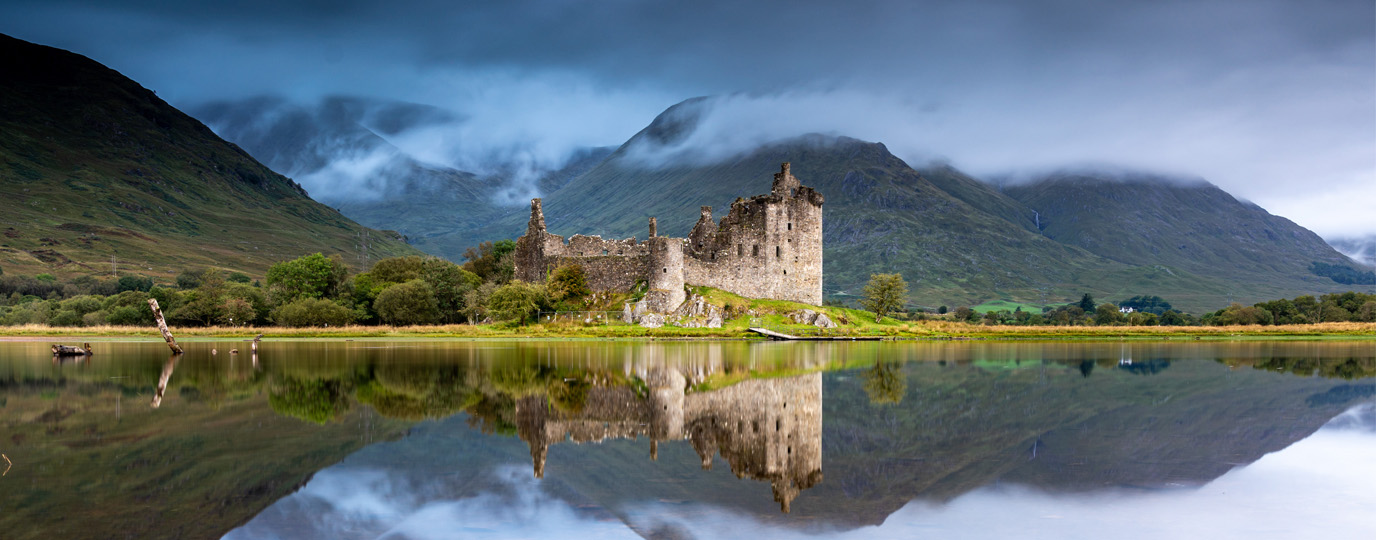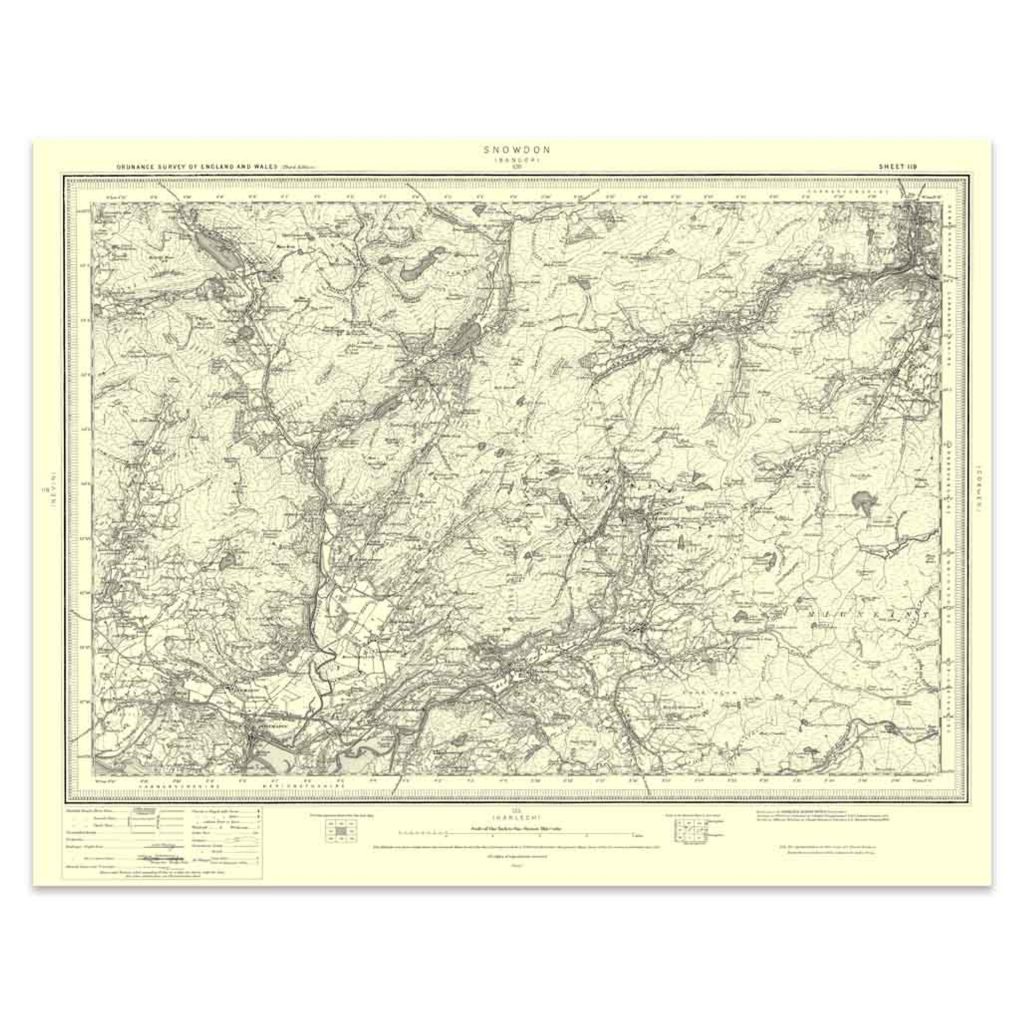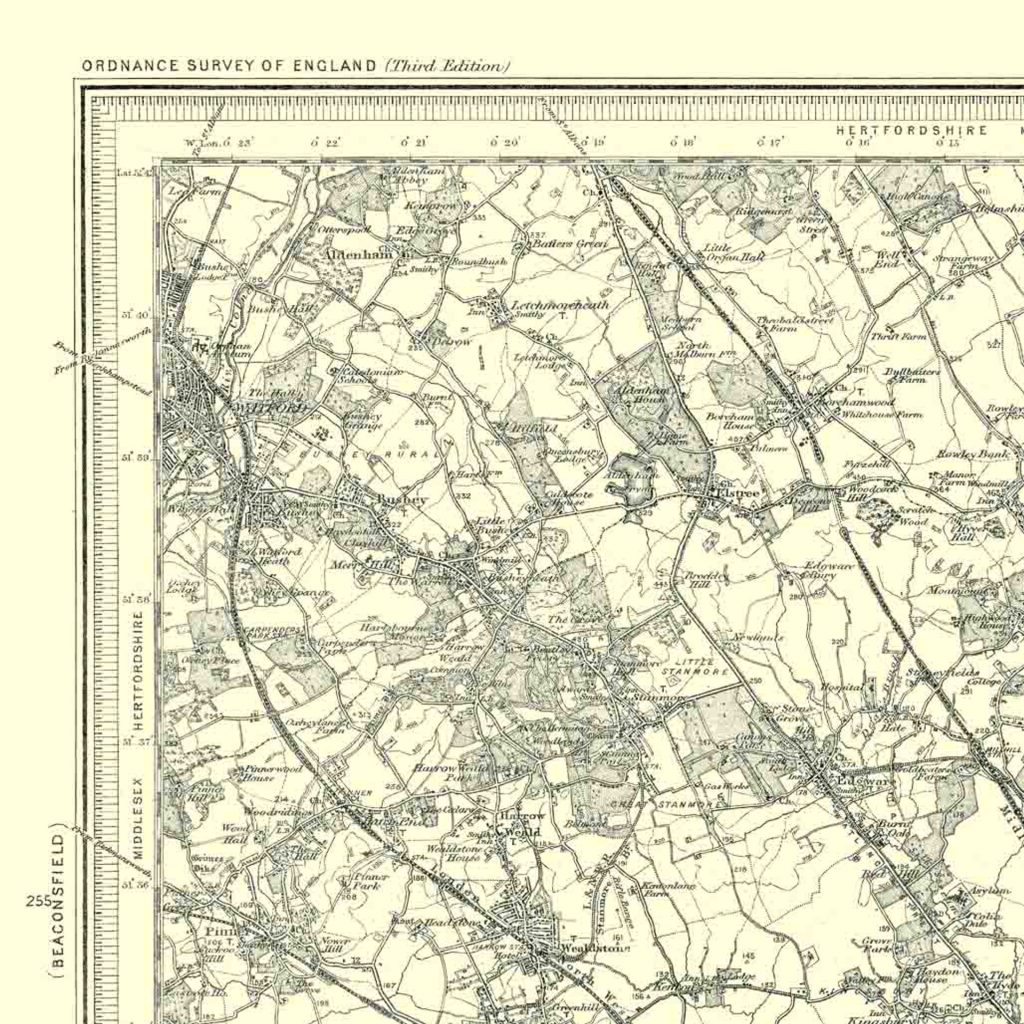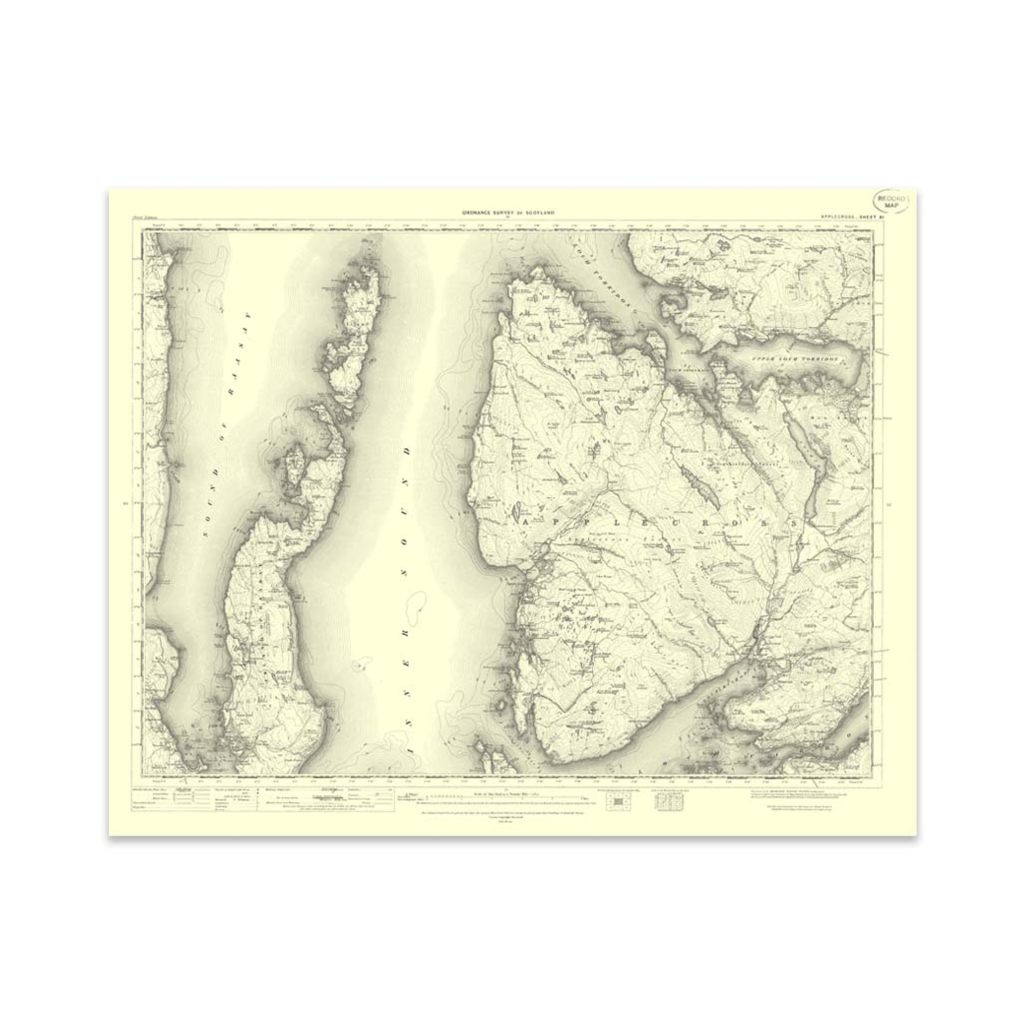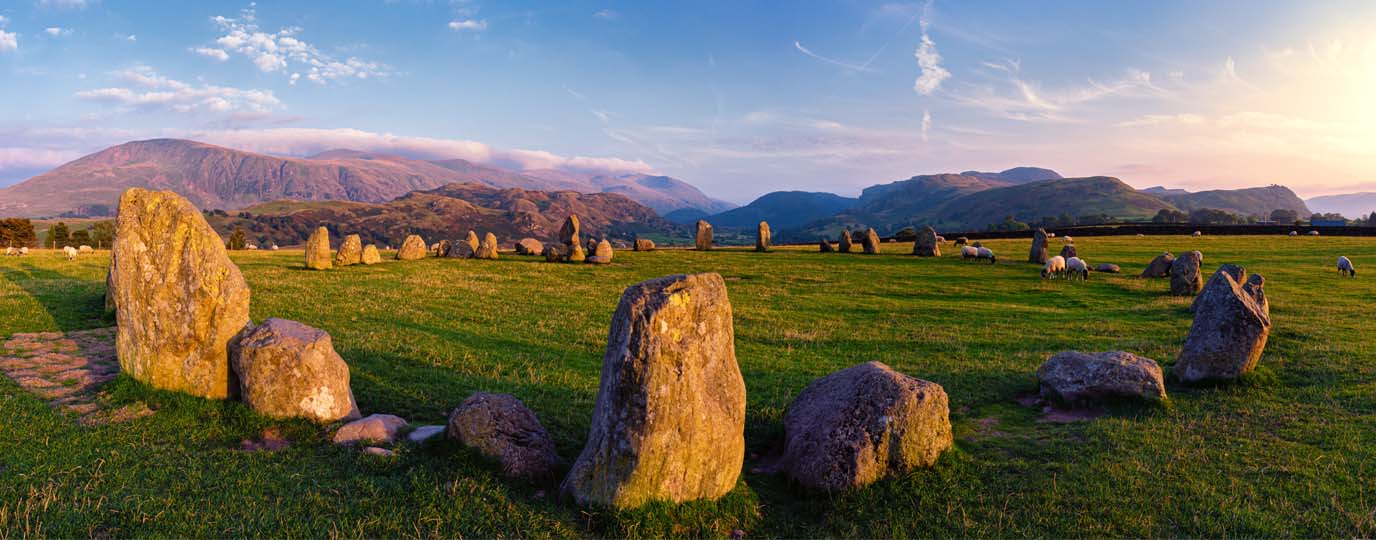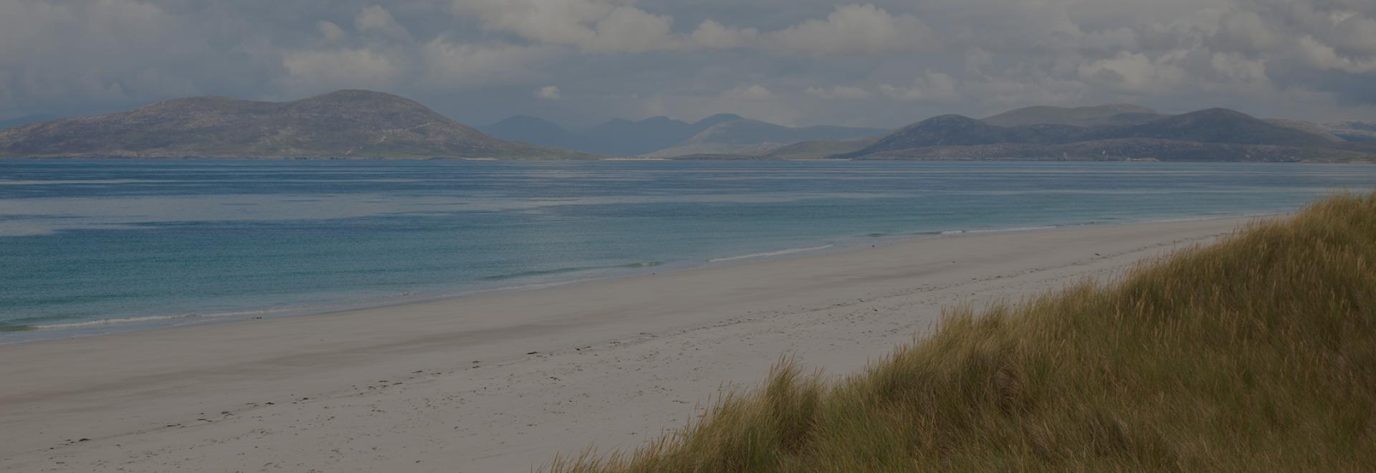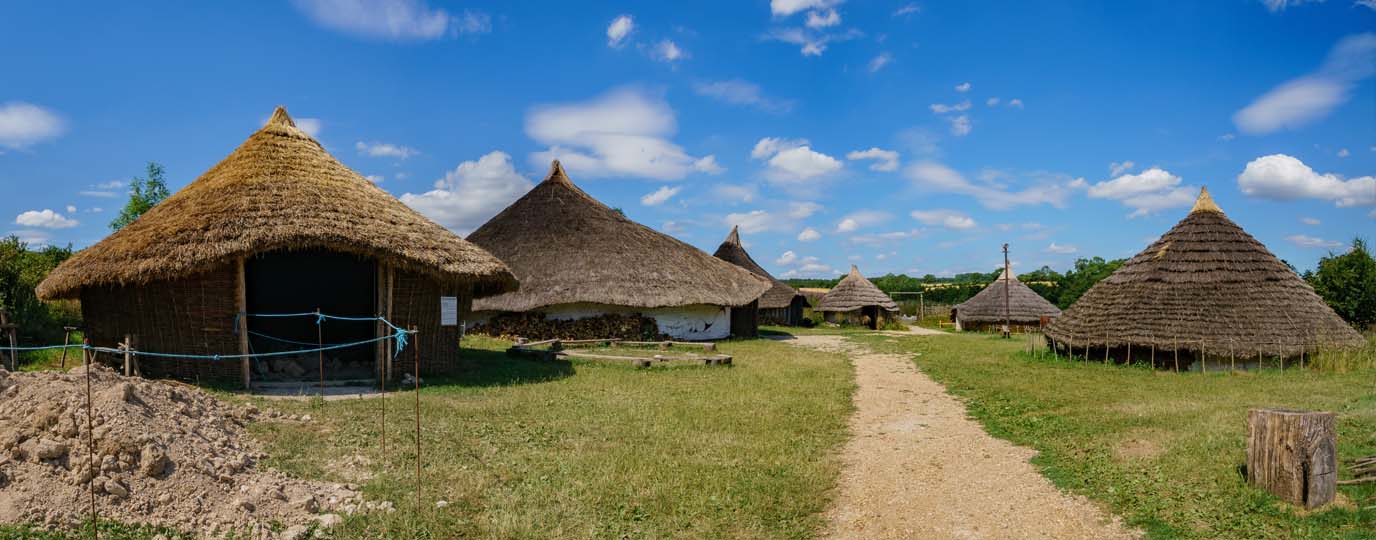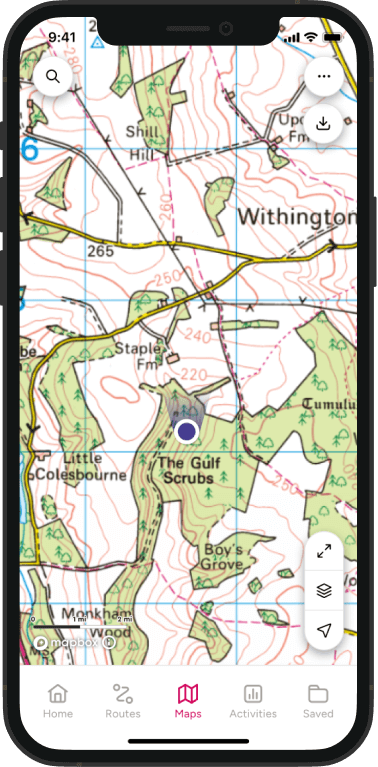Discover Castles in Scotland’s Wild Landscapes
There’s something undeniably captivating about castle ruins and Scotland, in particular, is rich with remains that are perfect to weave into your next journey. Set across a varied and dramatic landscape, these ruins evoke different moods. Some feel windswept and brooding, others peaceful and romantic, and a few carry an eerie, atmospheric charm.
Whether you’re walking through rolling hills, standing above crashing waves, or sitting quietly beside a loch, these weathered castles invite you to pause. Many are free to admire from afar, framed by breathtaking scenery, while others offer ticketed access for a closer look.
However you choose to explore them, on foot, by trail, or simply from a scenic viewpoint perfect for a dramatic photograph, each ruin tells a story. And if you can’t make it to Scotland, there are plenty of other castles across Britain, including those managed by English Heritage.
How many castles are there in Scotland?
There have been over 2,000 castles in Scotland, although it could be as high as 3,000 depending on the definition used. Of these, 1,500 are recognised as significant sites where there are still remains.
What’s the biggest castle in Scotland?
Edinburgh Castle is the biggest castle in Scotland, occupying over 35,000 square meters.
What’s the oldest castle in Scotland?
Castle Sween in Argyll is the oldest standing castle in Scotland, dating back to the 1100s. The oldest, continuously inhabited castle is Dunvegan Castle on the Isle of Skye, which dates back to the 13th century.
Which are the best castles to visit in Scotland?
Castle Stalker
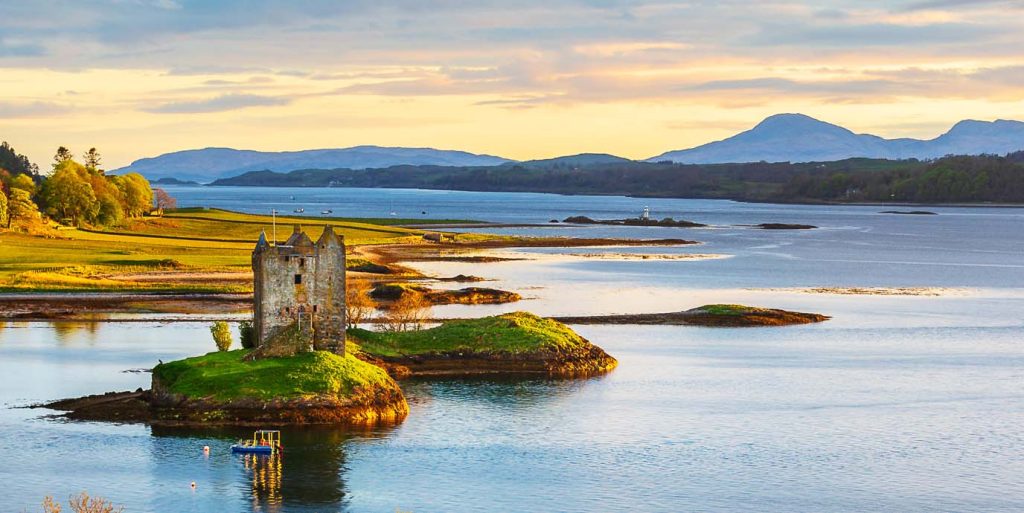
Where is Castle Stalker? Loch Laich, Argyll
When was Castle Stalker built? c. 1440s
Which OS paper map covers Castle Stalker? Explorer 376 – Oban & North Lorn
Rising from a tiny islet in Loch Laich, Castle Stalker is a picture-perfect tower house surrounded by water, mountains, and sky.
Built in the 15th century, Castle Stalker was originally a stronghold of the Stewarts of Appin, later passing to the Campbells through a mix of politics and betrayal. Its name comes from the Gaelic Stalcaire, meaning “hunter” or “falconer.” Although it fell into ruin in the 19th century, it was renovated in the 1960s, and private owners still maintain it today. The castle is occasionally open for guided tours, but even from afar, it captivates with its iconic silhouette.
You can best admire Castle Stalker from the shoreline viewpoint just north of Port Appin, where a short walk reveals a panoramic vista of the loch and its island sentinel.. The surrounding area is ideal for gentle coastal walks, cycling, and wildlife watching, with views stretching across to Lismore Island and the Morvern Peninsula.
Kilchurn Castle
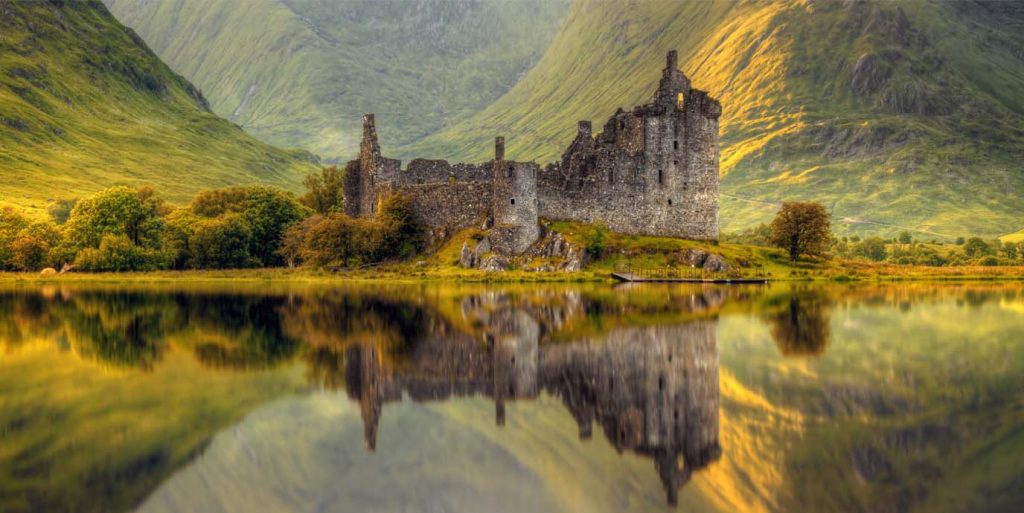
Where is Kilchurn Castle? Loch Awe, Argyll
When was Kilchurn Castle built? c. 1450s
Which OS paper map covers Kilchurn Castle? Explorer 360 – Loch Awe & Inveraray
Towering mountains, mirror-like waters, and wild Highland scenery surround Kilchurn Castle. A hauntingly beautiful structure, it stands on a small peninsula at the northeastern tip of Loch Awe.
Built in the mid-15th century, Kilchurn Castle served as a stronghold of the powerful Campbells of Glenorchy. Over the centuries, it was expanded into a formidable tower house and later used as a garrison. Although abandoned by the 18th century, its crumbling towers, spiral staircases, and open courtyard still evoke the grandeur and turbulence of Highland clan history.
Reaching Kilchurn Castle involves a short walk across a grassy causeway (accessible in drier months), with views that open to Ben Cruachan and the Arrochar Alps. The area is ideal for gentle rambles, picnics by the loch, and wildlife spotting. The stillness of the loch often creates perfect reflections of the castle and surrounding peaks, providing beautiful photography opportunities.
Please note that conservation efforts have temporarily closed the castle, but you can still admire it from afar
Urquhart Castle
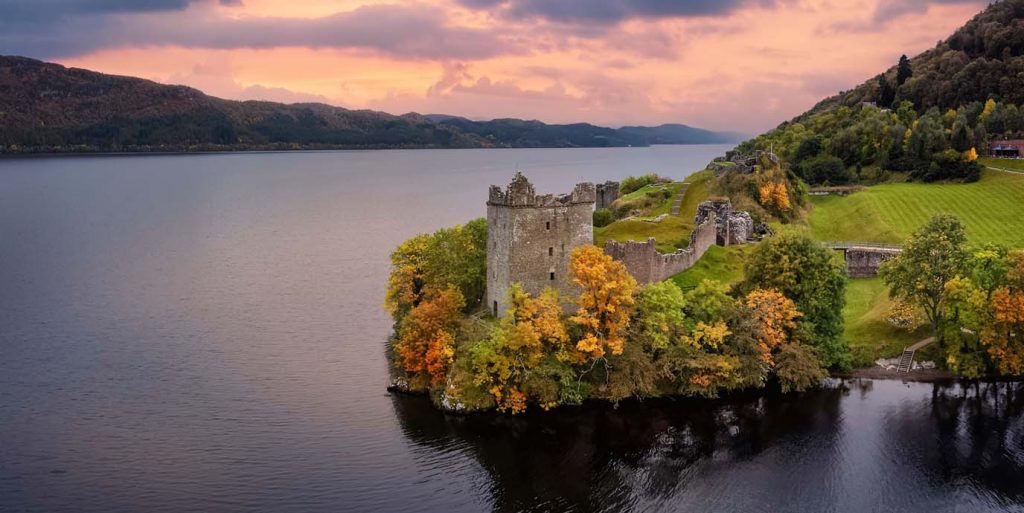
Where is Urquhart Castle? Loch Ness, Highlands
When was Urquhart Castle built? c. 1230s
Which OS paper map covers Urquhart Castle? Explorer 416 – Inverness, Loch Ness & Culloden
Set against the famed waters of Loch Ness, Urquhart Castle offers one of the most iconic experiences in the Highlands. For those who love walking in wild landscapes, this ruined fortress is a must-visit.
With origins dating back to the 13th century, Urquhart Castle has witnessed some of Scotland’s most dramatic historical episodes. It changed hands many times during the Wars of Scottish Independence, and was raided by the MacDonald Lords of the Isles. Ultimately it was destroyed in the 17th century to prevent it from falling into Jacobite hands.
Urquhart Castle sits on a rocky promontory with sweeping views over Loch Ness, surrounded by rolling hills and dense woodlands. The area is a haven for walkers and photographers. Nearby trails offer peaceful strolls or more challenging hikes through the Highland terrain. The Great Glen Way, a long-distance walking route, passes close by.
Auchindoun Castle
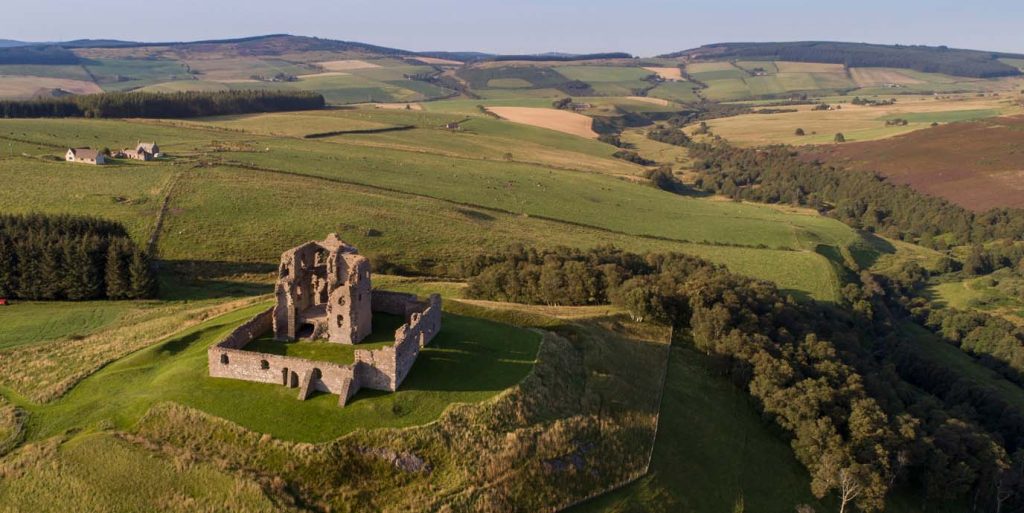
Where is Auchindoun Castle? Near Dufftown, Moray
When was Auchindoun Castle built? c. 1470-1480
Which OS paper map covers Auchindoun Castle? Explorer OL62 – Corren Hills & Glenlivet
Tucked away in the rolling hills of Moray, Auchindoun Castle is a remote and atmospheric ruin. Surrounded by open moorland and sweeping views of the River Fiddich valley, it’s a perfect destination to connect with the land.
Built in the 15th century, Auchindoun Castle was originally a stronghold of the Ogilvies. It passed to the Gordons, who were involved in some of the bloodiest feuds in Scottish history. In 1592, the castle was burned in revenge by the Mackintoshes and Grants, leaving it in ruins. Today, its curtain walls, tower house, and arched windows still stand defiantly against the elements.
Reaching Auchindoun involves a moderate walk along a farm track, with the castle slowly revealing itself atop a grassy knoll. The surrounding landscape is classically Highland, with windswept vistas rich in wildlife. The walk is especially rewarding in spring and autumn, when the hills are alive with colour.
Tantallon Castle
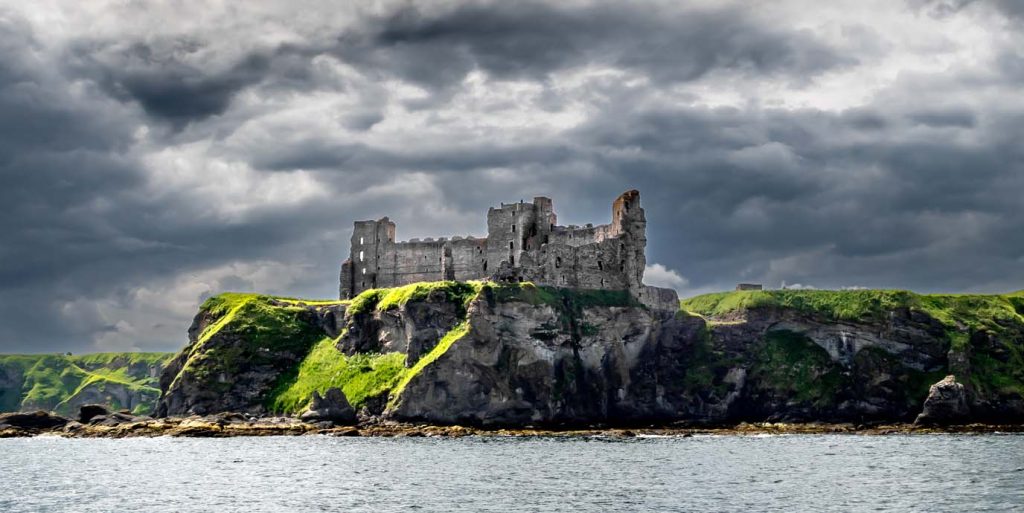
Where is Tantallon Castle? North Berwick, East Lothian
When was Tantallon Castle built? c. 1350
Which OS paper map covers Tantallon Castle? Explorer 351 – Dunbar & North Berwick
Perched on the edge of a cliff overlooking the Firth of Forth, Tantallon Castle is a dramatic red sandstone ruin. With its commanding views, rugged coastal setting, and rich history, it’s a magnet for those who love wild seascapes.
Built in the 14th century, Tantallon Castle was the seat of the Red Douglases, one of Scotland’s most powerful noble families. It was designed as a curtain wall castle, with a massive stone wall facing inland and the sea acting as a natural defence. The castle endured multiple sieges, including a brutal bombardment by Oliver Cromwell’s forces in 1651, which left it in ruins. Today, its towering walls, spiral staircases, and hidden chambers remain as memories of the past.
The castle’s location is nothing short of spectacular. Facing the Bass Rock, a volcanic island teeming with seabirds, and surrounded by open skies and crashing waves, Tantallon Castle is an unforgettable destination. The clifftop paths around the castle provide panoramic views of the coastline and are ideal for hikes, birdwatching, and sunset photography.
For a longer walk, take a look at a route that starts at the Tyninghame Beach and follows Ravensheugh Sands to Tantallon Castle.
Eilean Donan Castle
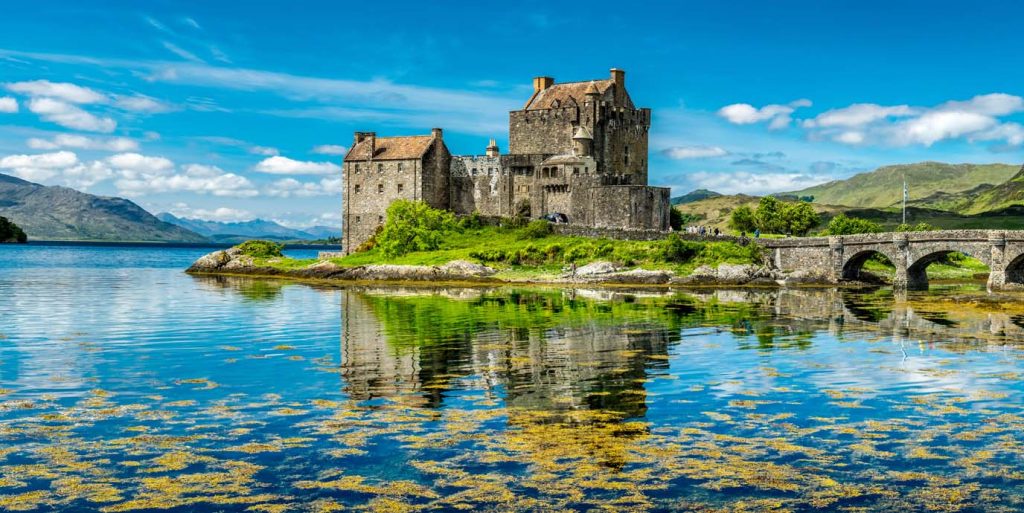
Where is Eilean Donan Castle? Loch Duich, Loch Long, and Loch Alsh, Western Highlands
When was Eilean Donan Castle built? Mid 1200s, during the reign of King Alexander II (1214–1249).
Which OS paper map covers Eilean Donan Castle? Explorer 413 – Knoydart, Loch Hourn & Loch Duich
Set on a tiny tidal island where three great sea lochs meet, Eilean Donan Castle is surrounded by mountains, water, and sky.
Originally built in the 13th century to defend against Viking incursions, Eilean Donan became a stronghold of the Mackenzie and MacRae clans. It was destroyed in 1719 during a Jacobite uprising and lay in ruins for nearly 200 years before being restored in the early 20th century. Today, it stands as a symbol of Highland resilience and pride, with battlements, halls, and exhibits that bring its history to life.
A charming stone footbridge connects the castle to the mainland, and the surrounding area offers breathtaking walking routes. Whether you’re strolling along the lochside, hiking into the Kintail mountains, or simply pausing to take in the reflections on the water, the scenery is endlessly rewarding. The area is rich in wildlife, with chances to spot otters, seals, red deer, and birds of prey.
For those looking for a particularly challenging hike, take a look at our circular route that takes you from Eilean Donan Castle up into the rugged mountains nearby.
Strome Castle
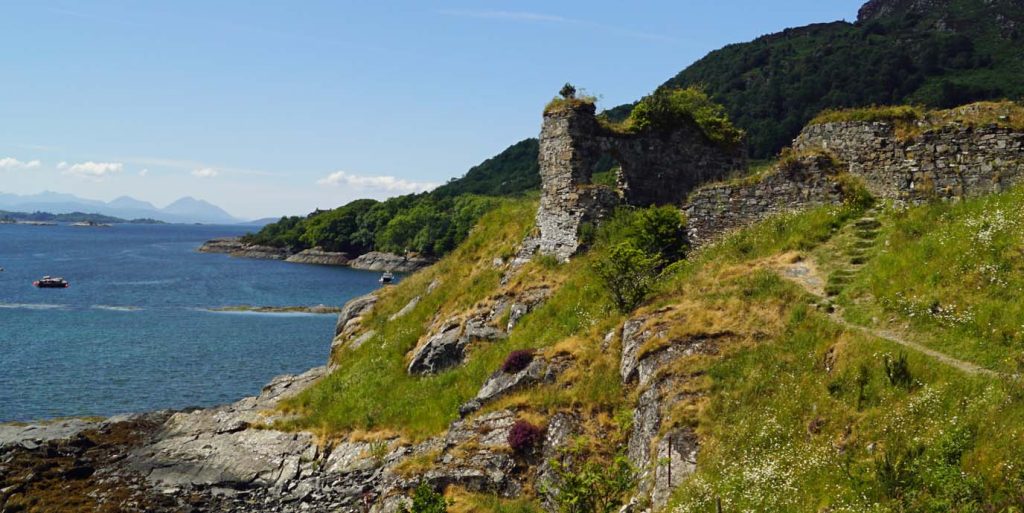
Where is Strome Castle? Loch Carron, Stromemore
When was Strome Castle built? 1400s
Which OS paper map covers Strome Castle? Explorer 428 – Kyle of Lochalsh, Plockton & Applecross
Set on a rocky promontory overlooking Loch Carron, Strome Castle is a peaceful, windswept ruin. With its panoramic Highland views, coastal walking paths, and rich clan history, it’s a perfect stop for those who love exploring and connecting with nature.
Originally built in the 15th century, Strome Castle was held by the MacDonalds of Lochalsh. It was then passed to the MacDonells of Glengarry. It was damaged in 1602 by the Mackenzies, who destroyed it during a bitter clan feud. Only a few ruins were left and remain standing today.
The castle is perched above the narrowest point of Loch Carron, where the sea loch narrows dramatically between steep hills. From the ruins, you can gaze across to Plockton, the Applecross Peninsula, and the distant peaks of Skye. The surrounding area is ideal for coastal walks and wildlife spotting. Seabirds wheel overhead, while the occasional seal may surface in the loch below.
Dunnottar Castle
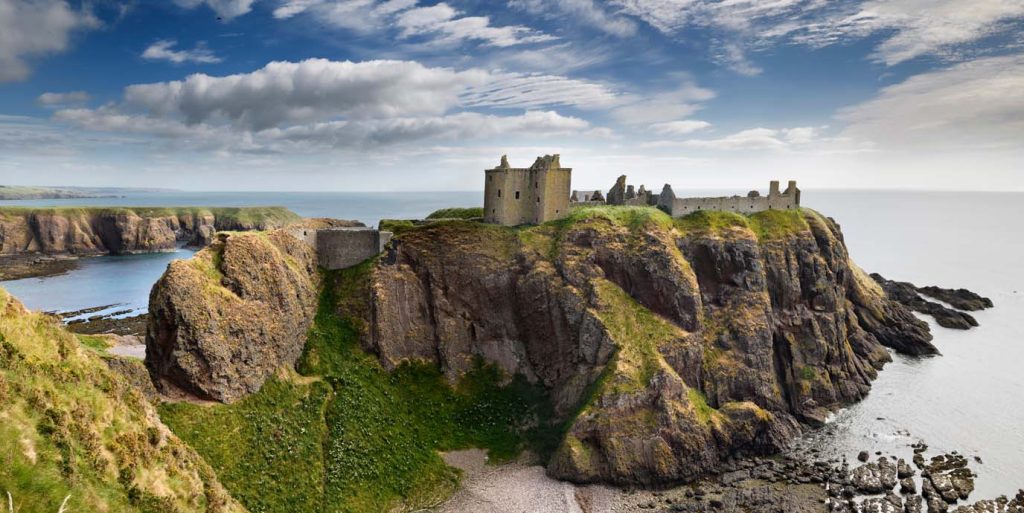
Where is Dunnottar Castle? Stonehaven, Aberdeenshire
When was Dunnottar Castle built? Late 1300s (although Dunnottar Castle’s origins are very old, dating back to a Pictish fort from as early as 5000BC)
Which OS paper map covers Dunnottar Castle? Explorer 396 – Stonehaven, Inverbervie & Laurencekirk
Perched dramatically on a rocky headland jutting into the North Sea near to Aberdeen, Dunnottar Castle is one of Scotland’s most breathtaking historic sites.
The site was believed to have been fortified in the Early Middle Ages, although most of the surviving ruins reflecting its 15th–17th century heyday. It played a pivotal role in Scotland’s fight for independence. It famously sheltered the Scottish Crown Jewels from Oliver Cromwell’s army in the 1650s. Over the centuries, it has witnessed sieges, royal visits, and tragic imprisonments.
Sheer sea cliffs, windswept grasslands, and panoramic coastal trails surround the castle. The approach to the castle itself is a scenic walk with a changing landscape. It shifts from rugged coastline to reveal the dramatic silhouette of the ruins against the sky. The clifftop paths offer excellent opportunities for hiking, birdwatching, and photography. It’s especially beautiful at sunrise or sunset when the light casts a golden glow over the stone walls and crashing waves below.
For a walk that takes in Dunnottar Castle and the stunning coastline, take a look at a walk from our Outstanding Walks Scotland guide.
Castle Tioram
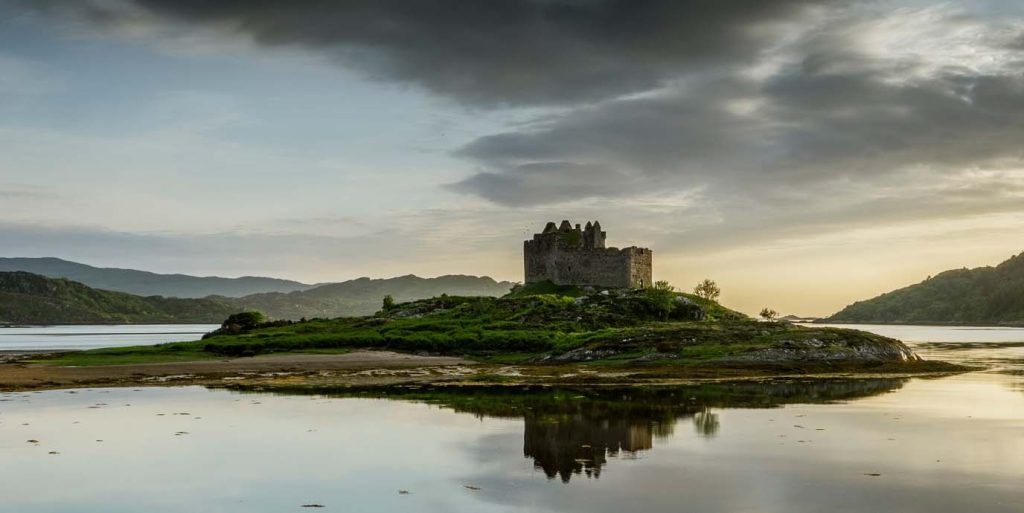
Where is Castle Tioram? Loch Moidart, Lochaber
When was Castle Tioram built? Mid 1200s
Which OS paper map covers Castle Tioram? Explorer 390 – Ardnamurchan
Perched on an island where Loch Moidart meets the sea, Castle Tioram (pronounced “chee-rum”) is a weathered stronghold. Remote, rugged, and steeped in clan history, it’s a perfect destination for those seeking dramatical coastal views and walks.
Castle Tioram was the ancestral seat of the Clanranald branch of Clan Donald, one of the most powerful Highland clans. Built in the 13th century, it played a key role in the clan’s dominance of the western seaboard. Although abandoned and partially destroyed in the 18th century during the Jacobite uprisings, its curtain walls, gatehouse, and inner courtyard still stand today.
Accessible only at low tide, the small island, Eilean Tioram, is connected to the mainland by a sandy causeway. The walk to the castle is short but magical, especially as the tide recedes to reveal the path. The surrounding area is a haven for walkers and photographers with scenic views abound. With trails winding through ancient woodland, heather-covered hills, and along the shimmering loch shore, there are vistas at every turn. The views across Loch Moidart and out to the Small Isles are unforgettable.
To make the most of a visit to Castle Tioram, follow a circular route from the castle and explore where the River Shiel meats Loch Moidart.
Loch An Eilein Castle
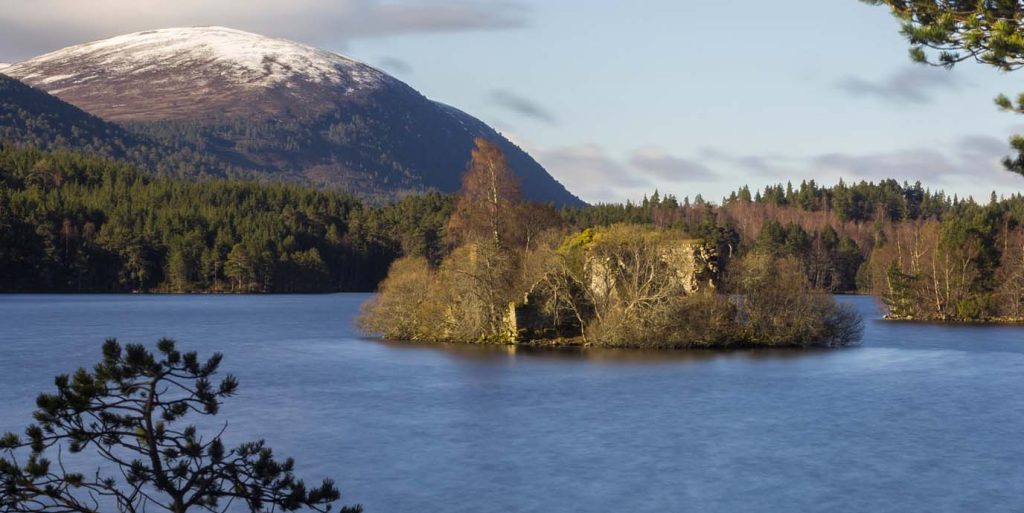
Where is Loch An Eilein Castle? Loch an Eilein, Aviemore
When was Loch An Eilein Castle built? Between 1222 and 1298
Which OS paper map covers Loch An Eilein Castle? Explorer 390 – Cairn Gorm & Aviemore
Tucked away in the heart of Rothiemurchus Forest within the Cairngorms National Park, Loch an Eilein Castle is a hidden gem. The castle is a mysterious ruin on a small island in a tranquil loch, surrounded by ancient Caledonian pinewoods.
The castle dates back to the 13th or 14th century, likely built by the Bishop of Moray. It was later used by the powerful Wolf of Badenoch, Alexander Stewart. Its crumbling walls still stand proudly on the island, accessible only by boat or visible from the shore.
The loch is encircled by a well-maintained 5 km walking trail, ideal for a gentle stroll. This circuit is one of the most scenic low-level walks in the Cairngorms. Along the way, you’ll pass through Scots pine forests, spot red squirrels, deer, and woodland birds, and enjoy stunning views of the loch and its island castle. In autumn, the forest glows with golden hues, while in winter, the snow-dusted trees and frozen loch create a magical scene.
For a longer walk from nearby Coylumbridge, take a look at another of our walks from the guidebook, Outstanding Walks Scotland.
Looking for more of Britain’s history?
If these castle ruins in Scotland have whet your appetite for history, take a look at these vintage maps on the OS shop. While they might not be centuries old, we have over 470 available covering the whole of Great Britain from 130 years ago. Not only do they make for a great gift for a history or map lover, but they also look fantastic framed on a wall. You can even compare them side by side with modern OS Maps to see what changes have occurred over time.
